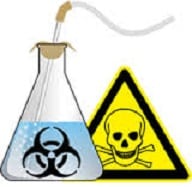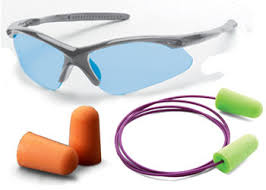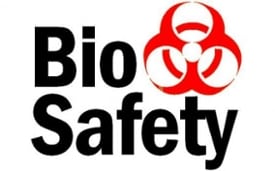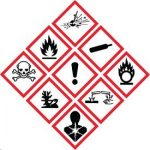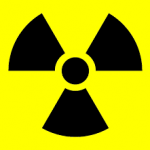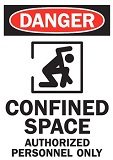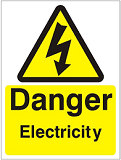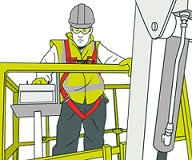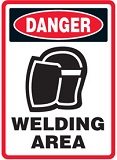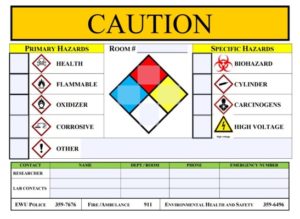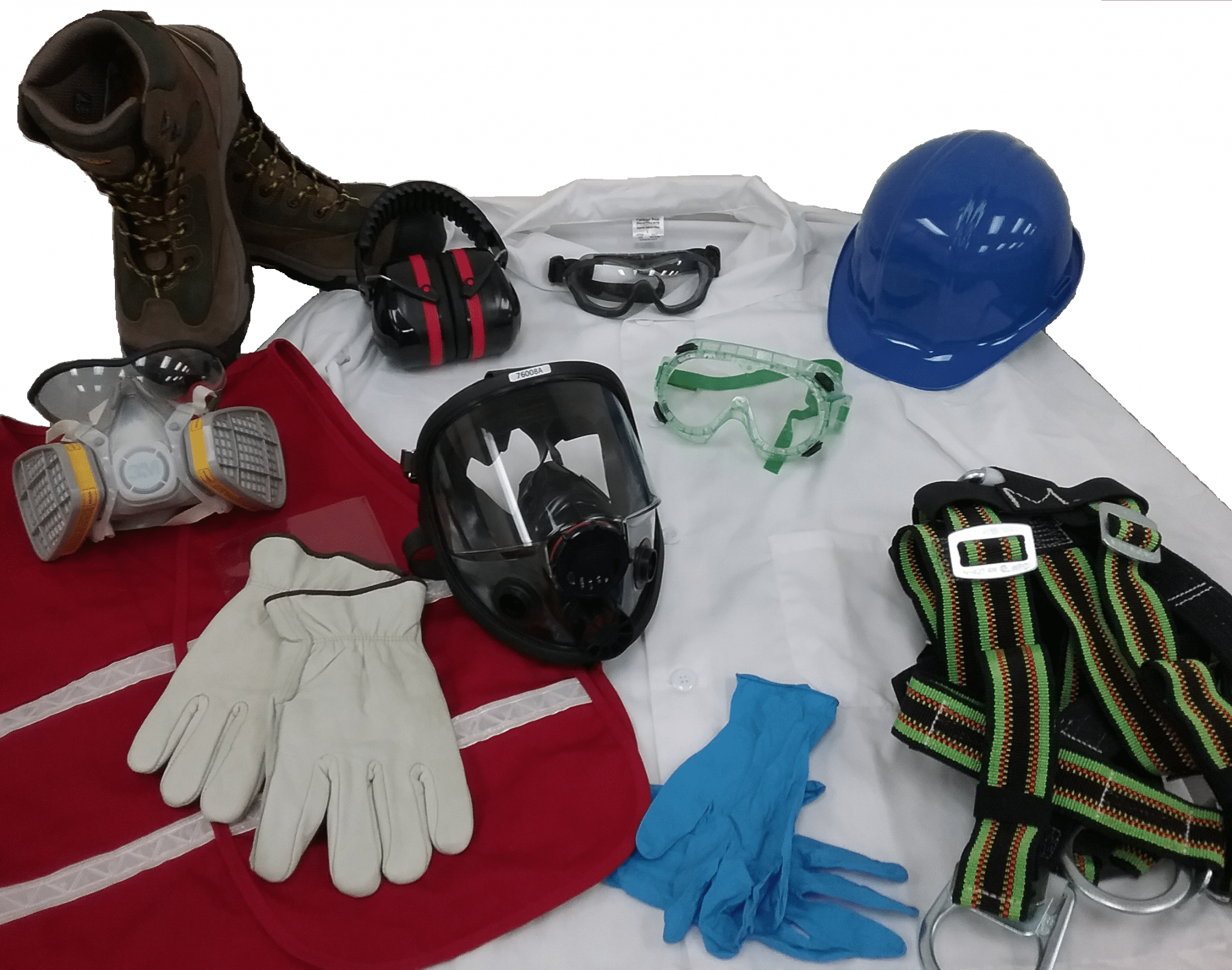On This Page
On Sub-pages
Laboratory Safety Sub-pages
Shop Safety Sub-pages
General Safety for Lab and Shop Work
Use common sense when working in laboratories or shops.
- No eating or drinking
- Don't handle contacts or apply make-up
- Tie back hair and don't wear loose clothes
- No running
- Clean up any messes you make
- Report any accidents or chemical spills immediately
- Follow all instructions
- Wear personal protective equipment when necessary
- If you don't know how to use something, don't touch it
- Ask questions if you don't understand something
Stay safe in labs and shops, make sure you know what you will do before you start and be aware of your surroundings.
Safety Training
Supervisors, Instructors, and Principle Investigators are required to provide safety training to all employees and students who work under them; they have the responsibility to ensure that their workers/students have the appropriate knowledge and experience to work safely. EH&S can assist with training when requested. Refer to our Training page for information about requesting specific trainings.
All trainings must be documented; the Training Documentation form was designed to help record the important information. Documentation should include:
- Training subject
- Date of training
- Brief description of information provided
- Names of trainees
- Name of trainer
- If a PowerPoint or any handouts are used in the training, those should be attached to the training record
Training records must be kept for at least three years. It is recommended that records be retained for at least 7 years, and preferably they should be retained for the duration of the trainees time at EWU plus three years. Training records can be sent to EH&S for retention.
Regulators who come on campus can request training records at any time.
Hazard Identification
Laboratories and shops can present a number of unique hazards. Moving parts, chemicals, biological material, and radiation are examples of hazards that may be present inside a laboratory or shop.
In order to ensure the safety of all students, staff, and visitors, hazards within rooms must be clearly identified so they are not accidentally encountered.
Principle Investigators are responsible for identifying hazards within their laboratories or shops and for alerting EWU students and staff to their presence. The Hazard Identification Form and the Hazard Door Signs are used to make sure that the community is made aware of any hazards within a room.
Hazard Identification Form
The Hazard Identification Form should be filled out by all laboratories and shops on campus. It is used to identify the types of hazards found in each room.
The length of this form depends on the different materials inside a laboratory or shop. There is the option to save and continue if necessary.
This form will need to be updated annually, or when hazards in the laboratory or shop change.
Hazard Door Sign
The Hazard Door Sign is used to label doors with the hazards found in the room. They are required on all laboratory and shop doors at Eastern.
The link is to a form fillable PDF. Select the hazards present in the room, fill out the NFPA diamond, and then print out a copy to place on the door. If there are no chemicals in the room, the NFPA diamond should have a zero in the blue, red, and yellow diamonds and the white diamond should be empty.
These signs are posted on the outside of the room door. You do not need to post an emergency number on this sign unless you have a number that you don't mind everyone having access to.
The information on them should be reviewed annually, when the Hazard Identification Form is reviewed, to ensure accuracy.
Compressed Gas Cylinders
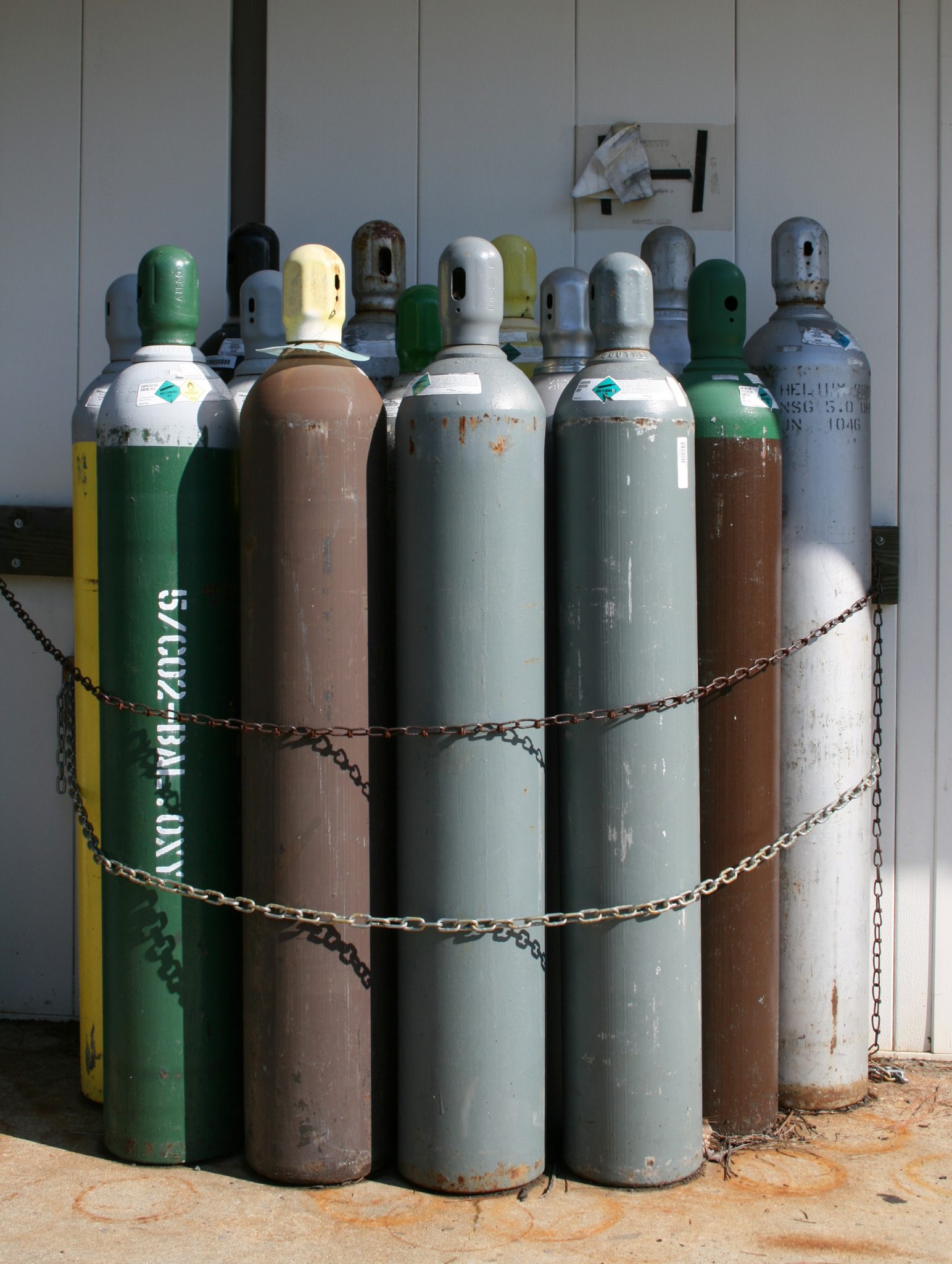
Compressed gases are used in a variety of settings on campus. In addition to chemical hazards from the contents of the cylinders, compressed gases can also pose hazards from the pressure they are stored under and/or from temperature.
A couple of things to keep in mind when working on/around compressed gases:
- A label with the contents and hazards must be visible at all times
- Contact EH&S if you would like magnetic labels for your gas containers - we know the standard label is usually on the wrong side
- All compressed gas containers should be stored upright.
- Cylinders under pressure must be chained to a wall or another stationary object.
- Cylinders should be closed, and capped, when not in use and during transport
- Flammable gases should not be stored near shop/lab exits
- Check tubing periodically to ensure it is in good condition
PPE is the last line of defense to protect workers from hazards that are found in labs and shops on campus. All PPE should be inspected before use to make sure it is in good condition.
Employees are required to wear all PPE for their jobs. The PPE will be provided at no cost to the employee and should be replaced or repaired if it becomes damaged.
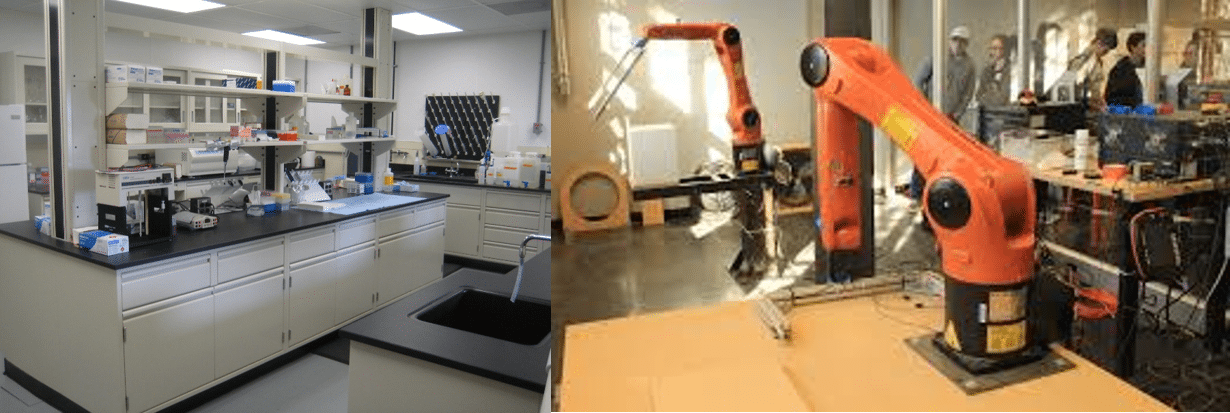
 Compressed Gas Cylinders
Compressed Gas Cylinders